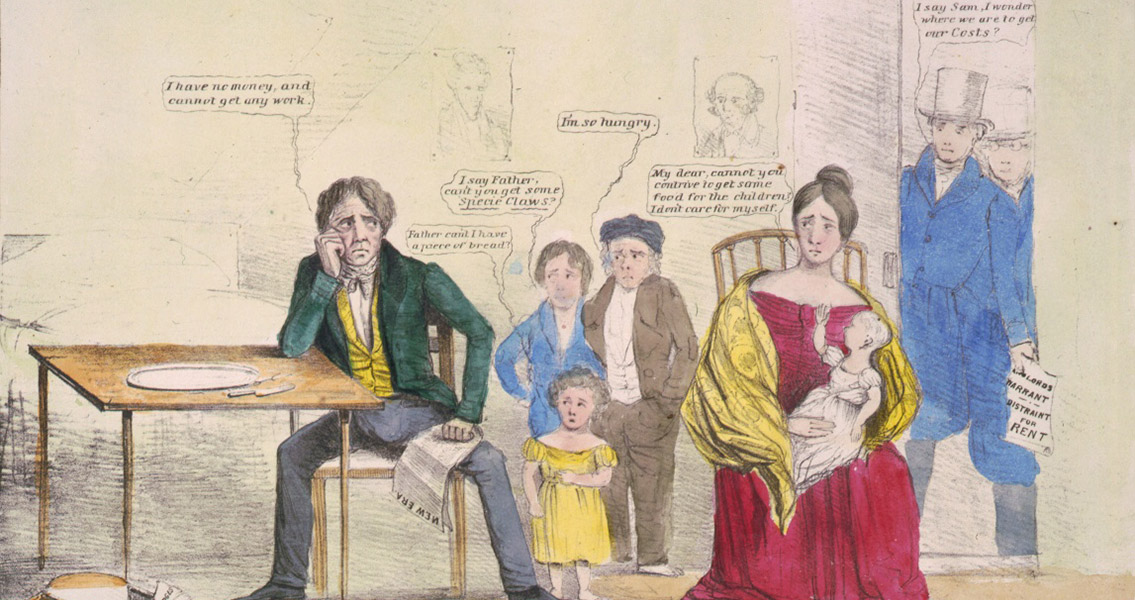<![CDATA[The first signs of the Panic of 1837 came on 10th May that year when the Bank of New York announced it would no longer accept specie payments. The declaration essentially meant that the financial institution wouldn't redeem paper currency in silver or gold, and it was soon joined by other banks across the United States. Specie suspensions inevitably triggered panic, which in turn caused banks to crash. "So they go — smash, crash. Where in the name of wonder is to be the end of it?" wrote George Templeton Strong, a diarist from New York, capturing a sense of the unexpected chaos that had descended over the US economy. By the end of the Panic of 1837, 40% of the USA's 850 banks were out of business and huge chunks of the economy had entered a dramatic slump. Inevitably, the struggles of business and industry were reflected in widespread unemployment - by the start of 1838 some half a million Americans were out of work. Although the economy recovered in 1838, it proved short lived, a second panic in 1839 pushing the USA into a further four years of recession. The depths of economic calamity triggered by the Panic of 1837 would not be seen again until the Great Depression, close to a hundred years later. For many, it raised questions about exactly what role government should play in the economy, a debate which continues to this day. A host of historical factors, internal and external, long and short term, led to the dire situation the American economy faced in 1837. The actions of Andrew Jackson, US president from 1829 until March 1837, are often considered to have been a key trigger of the crisis. Jackson had a reputation of being defiantly populist, an anti-establishment and anti-Eastern states figure who looked to bolster the freedoms of the Western states. Almost as soon as he was elected for a second term in 1832, Jackson set about the the task of dismantling the centralised banking system of the USA and redistributing control to smaller state banks, something he believed could reduce the dominance of the East. Jackson's actions triggered a decrease in confidence in the banking system and the currency, leaving the country's economy in a precarious state. Then, in 1836, Jackson issued the Specie Circular which insisted that all public lands must be paid for with gold and silver. It challenged the entire private banking system, drastically reducing the value of the individual currencies the banks had created and hitherto used. Although he wasn't president when the Panic of 1837 set in, many historians have suggested Jackson's actions had laid the foundations for the economic crisis which was ultimately triggered by the failure of the New Orleans cotton brokerage firm, Herman Briggs & Co, earlier in 1837. Other factors however, should also be considered; with attempts to place all blame on Jackson possibly influenced by political biases. Another key cause, for instance, concerned international trade. In 1836 the Bank of England had sharply reduced its credit, in turn forcing many British companies to stop doing business with the United States. Demand for US cotton in particular was badly hit, triggering a drastic fall in prices. A month before the Bank of New York refused to accept specie payments, world prices for commodities fell, causing a run on banks across the globe. In addition, a massive real estate bubble caused by the rapid western expansion of the US had seen swathes of property owned by both banks and private individuals deemed overvalued. As land surveys decreased the value of properties, a rush of speculation started which caused several banks to fail. The causes of the Panic of 1837 were wide ranging and diverse, but they highlighted the complicated workings of the US economy, and the massively significant role played by banks. The depression which followed the Panic of 1837 saw 39,000 Americans left bankrupt. It served as a chilling warning of the vulnerabilities of economies in the modern era. ]]>
Economic Crisis In the Nineteenth Century: The Panic of 1837
